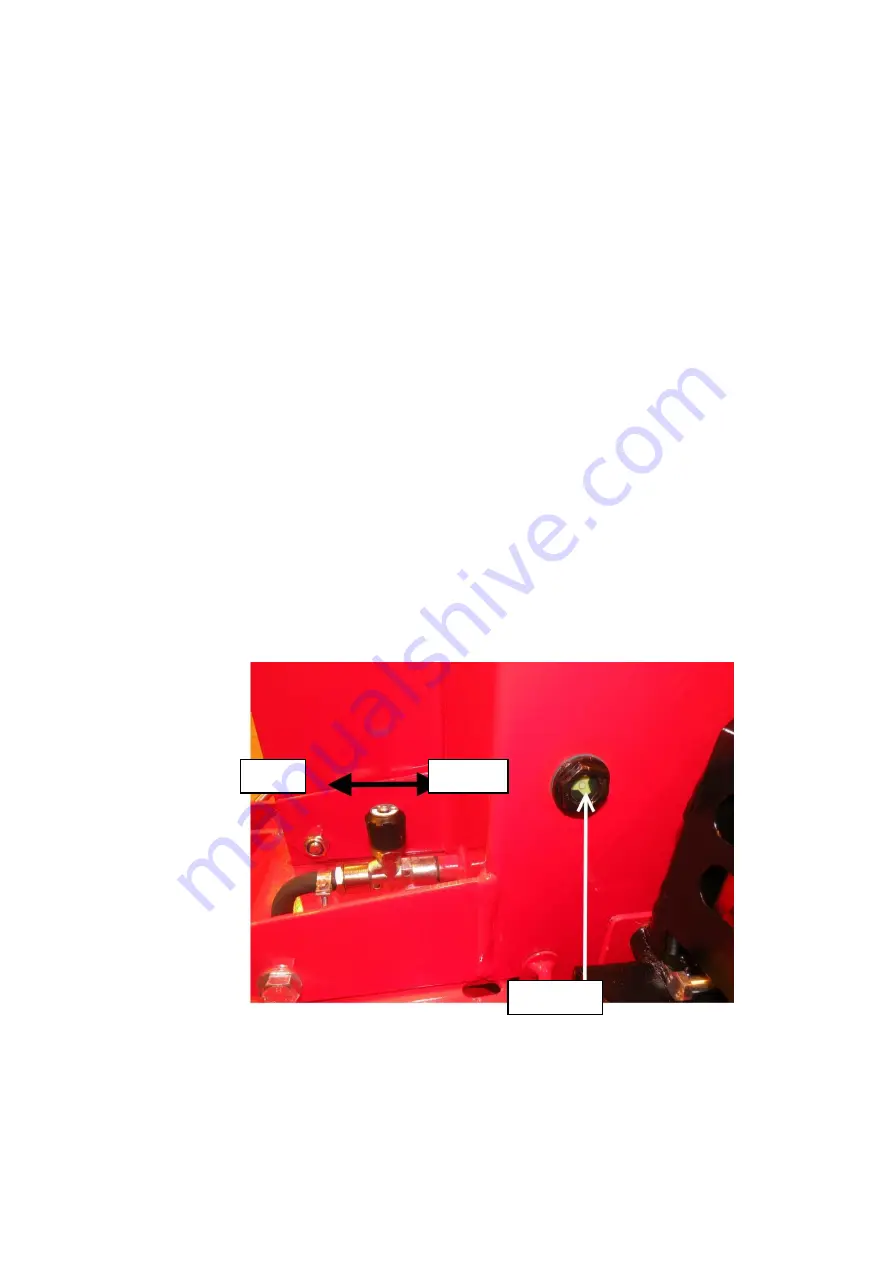
27
Original
Version 1-2011
The following things significantly affect the operation of the debris removal device: the angle of the
discharge conveyor, the speed of the belt and the distance of the separation plate A from the upper roller
of the conveyor. In other words, the debris separation result is better the steeper the angle (however, no
more than 40 degrees), the lower the speed and the longer the distance between the separation plate A
and the upper roller. The distance of the separation plate A is optimised (with the adjustment screw B) at
the factory in conjunction with the machine's testing. However, the adjustment can be changed, if
necessary. The optimal running speed for the belt can be determined by trying different settings. The
split wood should only just pass over the plate. The adjustment plate can be adjusted with the separation
plate screws B.
The operator must ensure that the distance between the debris discharge opening and the pile of debris
that accumulates under it is at least 20 cm.
4.5 Using the blade chain's oil adjuster
The amount of oil that is fed to the blade chain can be adjusted with the valve in Figure 32. Closing the
valve (clockwise) reduces the oil flow and opening it (anti-clockwise) increases the flow. In the summer,
the correct adjustment is 1,25 rotations while, in the winter, the adjustment should be 1,5-2 rotations.
Monitor the oil flow to the blade chain when there are changes in the weather. In warmer weather, the
oil is more viscous and flows considerably smoother than in cold conditions.
NOTE! The blade chain lubrication opens or closes automatically when the splitter is activated or shut
down. The adjustment valve only changes the rate of the flow.
Figure 32.
The oil gauge in Figure 32 indicates when blade chain oil must be added. When the gauge is an oily
brown, the oil level is sufficient, but when the gauge is clear, oil must be added immediately.
Open
Closed
Oil gauge






































